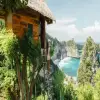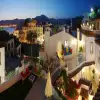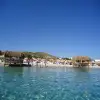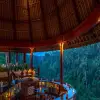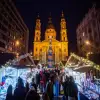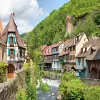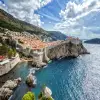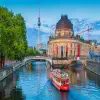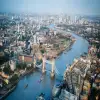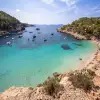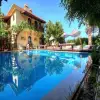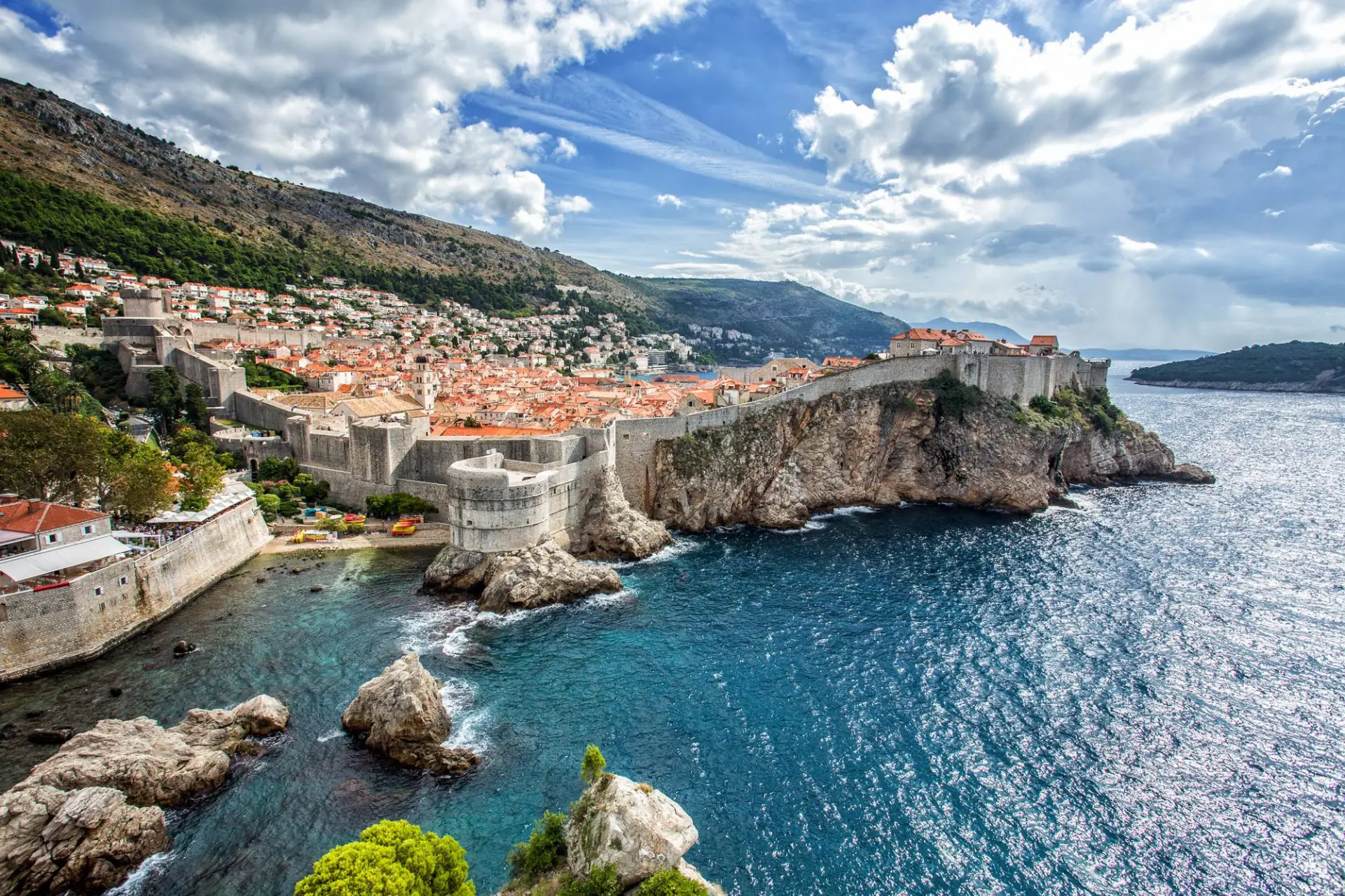
Places to see and things to do in Dubrovnik
With its sublime location, overlooking the calm blue waters of the Adriatic, Dubrovnik is one of the world's most magnificent walled cities. Now a Unesco world heritage site and Croatia's most up-market destination, it was once the capital of the wealthy sea-faring Republic of Ragusa (1358-1808).
During its Golden Age in the 16th century, it had one of the largest merchant naval fleets in the world, with consulates in more than 50 foreign ports. Brave sailors, hard-bargaining merchants and shrewd diplomats, the people of Dubrovnik became extremely rich, leading sophisticated lifestyles and valuing refinement and the arts.
Today, visitors come here for leisure, not to trade. The main draw is the charming pedestrian-only old town, packed with aristocratic palazzi and elegant Baroque churches, contained within sturdy medieval fortifications.
Add to this the beaches, pristine sea, informal eateries serving top-notch seafood, chic five-star hotels and adventure sports facilities, and your holiday is made. Which is why people like Beyoncé, Roman Abramovich, Sir Roger Moore and Bob Geldof have recently been spotted here.
For All Accomodation Alternatives in the city: Please visit https://www.booking.com/city/hr/dubrovnik.en.html?aid=1939100&no_rooms=1&group_adults=2

What's more, Dubrovnik's Old Town has been a popular filming location in recent years. The Game of Thrones television series and the Star Wars: Episode VIII film were both shot here, while the Robin Hood: Origins film has also been in the making here this year.
The downside of this is that the majority of locals have sold up their properties for use in tourism and moved to the modern suburb of Lapad, so that the old town is little more than an empty museum in winter. The number of people permanently residing in the historic centre has dropped from 5,000 (in 1991) to 500 (2014), while the number of visitors has increased exponentially - there's even talk of limiting the number of people that can enter the Old Town at any one time by issuing tickets for entry during peak season. And prices for virtually everything are almost double what they would be anywhere else in Croatia. But that doesn't seem to be deterring the ever increasing number of holidaymakers.
Things to do in Dubrovnik
Dubrovnik is a one-town tourist industry on its own, with endless things to do all year round. As stunning as the clear blue sea around it, the former centre of the independent Republic of Ragusa invites superlatives and attracts the lion's share of Croatia's visitors. Read on for our insider's guide to the best things to do in Dubrovnik.
Nab the best table at Nautika Calling itself 'Dubrovnik's finest restaurant', Nautika is certainly the most prestigious, the kind of place that is the automatic choice whenever the Pope might be in town.

Sip Croatia's finest wines Dubrovnik's first wine bar is presided over by Australian-Croatian Sasha and his friendly and informative team. D'Vino manages to stock more than 100 varieties, 76 available by the glass.
Appreciate recent history New Zealander Wade Goddard came to the Dubrovnik as a photographer during the Siege in the early 1990s - and stayed. Affected by what he saw and keen to broaden the public's understanding of what happens in wartime, in 2003 he opened War Photo Limited. The gallery could have easily limited itself to Goddard's experiences in Croatia, but he quickly expanded its remit to exhibit works by leading exponents of this brave art from flashpoints around the world. The first floor houses these hard-hitting images in regularly changing exhibitions, while above you can see what was happening here in the 1990s. What today seems completely serene was then raging with bombardment and fires. Works are sold as limited-edition prints. Comments in the visitors' book sum up the venue nicely: 'It moved me beyond words,' is one typical entry.
Snag a sassy souvenir Stride down the main street of Stradun and all you see are tacky souvenir shops selling overpriced, Asian-made toot. Turn a corner from the Old Port to steeply rising Sv Dominika, towards the Ploce Gate, and you come across this modest doorway. Dubrovačka kuća proffers high-quality gifts at affordable prices
Splurge at 360 degrees At this top-drawer setting, you get top-drawer cuisine, perhaps even the best in Croatia. Here under expert gastronomic stewardship, you can expect meticulously sourced food, painstakingly created and immaculately presented - along with a setting, atop the Old Port, second to none
Buzz bar The only bar in a street filled with restaurants, seconds away from Stradun.
Take the cablecar to Srđ Opened in 2010, the gleaming orange Cablecar you see scaling the steep incline high up over the Old Town is both a tourist attraction and a piece of history.
Visit a medieval pharmacy Of all the Old Town treasures, the Franciscan Monastery and its Old Pharmacy Museum are the real gems. Don't be put off by the crowds - try and go at the end of the day.
Find the ideal beach Dubrovnik's city beach, Banje, is a short walk from the Ploče Gate. It's good for kids, with showers, deckchairs and sunloungers for hire, plus jet skis and inflatables. Yet it's not for locals. They head for Sveti Jakov, down the coast past the Villa Dubrovnik, a 20-minute walk along quiet, tree-lined Vlaha Bukovca.
Sink the perfect sundowner For those not used to the high-end surroundings of the Hotel Dubrovnik Palace, the Sunset Lounge may come as a shock, not least after the bone-shaking ride on rickety old city bus No.4 from the Pile Gate to its terminus here.
Have your own island idyll An uninhabited isle on Dubrovnik's doorstep, Lokrum is an unspoilt isle lush with pines, palms and cypress trees. Its verdant coastline beckons from the hotel windows of Ploče. Dotted with diverse ruins and remnants - medieval, ecclesiastical, Napoleonic, Habsburg - it has long been given over to nature.
Go sea kayaking Dubrovnik's signature outdoor activity for visitors, sea kayaking is organised for complete beginners as a half-day jaunt with lunch on Lokrum island thrown in
Browse the market in the Old Town
Walk the City Walls
Places to see in Dubrovnik
There is much to experience in Dubrovnik, from tracing the mighty city walls and exploring scenes from Game of Thrones, to spending the day on a four-poster bed by the sea, with an icy cocktail in hand. Destination expert, Jane Foster, gives the low-down on the city's most incredible things to do.
Old Town
Circle the City Walls
The medieval walls afford ever-changing views out to sea and over the old town, and hark back to the 13th century. They are best explored with a full-circuit, just over a mile's walk along the battlements. Further reinforcements, including several imposing towers, were added in the 15th century, to protect the city against the Ottoman Turks.
Step into a scene from Game of Thrones
The Rector's Palace is unmissable. Under the Republic of Ragusa (14th-19th century), the chief citizen (rector) would reside on the first floor of this sumptuous building, a confection of Renaissance and Baroque styles. His living quarters now host the Cultural History Museum, crammed with period furniture and costumes, sedan chairs, and paintings of Ragusan aristocrats.

The Rector's Palace
Trace Dubrovnik's sea-faring past
Dubrovnik's Maritime Museum - set in St John's Fortress, which guards the entrance to the old harbour - is a fascinating place to learn about the republic's impressive naval power, with exhibits spanning model ships, sailors' uniforms, navigational equipment, flags and maps. Come here to get your head around the vast merchant shipping wealth of what was once Ragusa - in the 16th century present-day Dubrovnik had one of the world's largest fleets, with over 180 ships and 4000 sailors.
Check out the city's best photo-journalism gallery
The exciting modern gallery War Photo Limited is dedicated to photo-journalism from global war zones, and attempts to offer unbiased reporting with a human element. Dubrovnik's sturdy fortifications have been put to the test several times during the centuries, most recently during the bloody break-up of Yugoslavia - and indeed, on the second floor,
Catch a boat to Lokrum islet
A lush escape of pines, cypresses, palms, eucalyptus, cacti and agave, and a rocky shore with decent spots for bathing. There's an abandoned 11th-century Benedictine Monastery near the south-west corner, and an adjoining villa built by Archduke Maximilian von Hapsburg - the complex lies in a botanical garden, with promenades, exotic planting and strutting peacocks, plus Lacroma bar-restaurant.
Outside the Old Town - Ploče
Swim and sunbathe at Banje beach
The sandy stretch a 10-minute walk east of the Old Town affords magnificent views of the medieval walls across the water. You can hire sun beds or baldachins (four-posters with wafting chiffon drapes), try water-skiing and parasailing, or even request massage. Above the beach, there's a lounge-bar on a wooden deck, doing cocktails and snacks, plus a seafood restaurant in an upper-level dining room.
Ride a cable car to the city's peak
An ultra-modern, low-effort amusement for medieval Dubrovnik - visitors can take in the best vistas without having to trek up steep hills or trudge up hundreds of steps. The cable car departs from a lower station just outside the Old Town, and has two light and airy carriages, each carrying up to 30 people, which make regular three-minute runs to the top of Mount Srđ. A must-do memorable experience for adults and children.
Out-of-town excursions
Sea Kayak around the Elafiti Islets
A great way to explore the Adriatic coast is by sea kayak. Local company Outdoor Croatia offers a full-day 'Arches, Caves and Islands' tour (10 hours), which takes adventurers around the Elafiti islands of Lopud and Šipan, with free time to swim, snorkel and cliff-jump. You'll meet the group at Dubrovnik's Gruž port, to catch the morning ferry to Lopud.
Explore Cavtat and rural Konavle
The nearby coastal town of Cavtat (served by regular taxi-boat and local bus) was founded by the ancient Greeks. This huddle of old stone houses are built on a pine-scented peninsula
Places to eat in Dubrovnik
Fresh local seafood tops the menu in Dubrovnik, from octopus burgers in low-key, hole-in-the-wall eateries to slap-up sushi feasts with fresh oysters and amberjack sashimi. Other options in this city of food lovers range from hearty sandwich joints to intimate Bosnian eateries. Telegraph Travel's expert, Jane Foster, rounds up Dubrovnik's best restaurants.
Old Town Bota Sushi & Oyster Bar
On a small raised terrace with high tables and stools shaded by big white parasols, close to the Cathedral. Bota serves fresh oysters caught on the owners farm' in the Pelješac peninsular (they can also make oyster tempura if you prefer them cooked), plus a choice of beautifully presented sushi prepared from outstanding locally-sourced fresh fish. For a celebratory feast, order the sumptuous selection of salmon maki, amberjack sashimi, tuna tartar and tiger prawn tempura, plus a bottle of champagne. Bota serves fresh oysters, plus a choice of beautifully presented sushi.

Proto, An old-fashioned and romantic establishment that dates back to 1886. The best tables are on a leafy first-floor covered terrace, plus there's a ground-floor dining room and tables on the street out front. It is widely regarded as the best fish restaurant in Dubrovnik, and specialises in classy Dalmatian seafood. You can indulge in fresh oysters from Ston, škampi na buzaru (shrimps in garlic, white wine and parsley) and whole fresh fish, served filleted. Recent illustrious customers include US film director Francis Ford Coppola and Serbian tennis player Novak Đoković. Proto is old-fashioned and romantic, and dates back to 1886.
Azur, This restaurant on Pobijana was founded by two Dubrovnik-born brothers and serves Croatian cuisine with an Asian twist. The menu is short but innovative - most dishes are based on fresh Dalmatian seafood, with exotic flavours added by Thai spices and fragrant herbs. Think cream of pumpkin soup with croutons; stir-fried prawns with cashew nuts, lime and fresh basil; swordfish fillet in black curry sauce. The atmosphere is relaxed and fun, with tables in a whitewashed vaulted space, with stone floors, Oriental rugs, subtle lighting and mellow music. Azur serves Croatian cuisine with an Asian twist.
Taj Mahal, This is one of the very few eateries to stay open all year in the old town, and offers a break from ubiquitous Dalmatian seafood. It's intimate: there are just five tables inside, and half-a-dozen more in the stone-paved street out front. The kitchen turns out Bosnian specialities, with an emphasis on meat. Look out for Begović čorba (creamy chicken soup with vegetables), zeljanica (spinach and cheese filo-pastry pies), charcoal grilled kebabs, and syrupy Turkish-inspired deserts such as baklava. They also serve a Bosnian breakfast, with strong gritty Turkish coffee. Taj Mahal offers a break from ubiquitous Dalmatian seafood.
Pink Shrimp Street Food This casual-chic eatery was opened by highly regarded Dubrovnik chef Ruđer Jelavić. His signature dish - light and crispy shrimp tempura on shredded courgette with creamy soya sauce - takes pride of place, along with a limited but creative choice of shrimp-based delights, including shrimp carpaccio with honey and lemon dressing. Rather like tapas, each plate is a 'taster', so you can order several for a light supper, with a bottle of good local wine. You'll find it in a narrow alley off Stradun, with just half-a-dozen high tables with wooden stools. Pink Shrimp Street Food is a casual-chic eatery serving tapas-style dishes.
Barba specialises in 'sea food/street food', and is ideal for lunch or supper on the run.
Buffet Škola is renowned for its slabs of freshly-baked bread filled with local pršut (prosciutto) and sir (cheese).
Kamenica This informal, family-run eatery serves generous platters of girice (small fried fish, similar to whitebait), pržene lignje (fried squid) and miješena salata (mixed salad) at outdoor tables on the square overlooking the open-air market.
Shopping in Dubrovnik
Bland souvenir shops are gradually taking over Dubrovnik's main thoroughfares, and if you really think that a ceramic mug bearing the word 'Dubrovnik' is going to look good in someone's kitchen cupboard back home, then you certainly won't have too much trouble finding one.
Those with both taste and the time to exercise it will find a huge range of traditional crafts, sold either by street sellers or in characterful stores in the narrow alleys of the Old Town.
One of the most authentic local products is jewellery. Jewellery was an integral part of local folk costume and also played an important part in local family ritual, with female children receiving earrings at baptism and at other important stages in their lives.
It was traditionally around Zlatarska ulica (Goldsmiths' Street) that the main jewellery workshops were to be found, although these days they are more randomly scattered throughout the Old Town. What hasn't changed is that the jewellery sold in the filigree shops has often been made on the premises by local artisans, using traditional folk designs as inspiration. Especially attractive are traditional earrings in gold or silver filigree, and large hoop- or drop-earrings adorned with baubles.
Konavle, the region southeast of Dubrovnik, produces a distinctive style of embroidery, rich in brightly coloured geometric shapes. Dazzling white blouses with intricately embroidered borders were once a standard form of female attire, and items like these can still be picked up on souvenir stalls. Konavle embroidery is also used to decorate more modern items such as tablecloths and handkerchiefs.
Dubrovnik's souvenir shops also sell a great deal of quality products that are common to the whole of Croatia, especially food-and-drink items such as natural honey, olive oil and herb-flavoured rakijas. One of the best places to pick up these is the daily outdoor market on Gundulićeva poljana, although most delicatessens in town also carry a good selection.
How to go to Dubrovnik
An insider's guide to getting to Dubrovnik, including flights to the city, as well as recommendations for cruises and car hire. By Jane Foster, Telegraph Travel's Dubrovnik expert.
Flights
British Airways (0344 493 0 787; britishairways.com) flies from Gatwick (all year, but with a reduced number of flights throughout winter), as do Croatia Airlines (0844 371 0310; croatiaairlines.com) (no direct flights through winter).
Through summer only, the following budget airlines fly direct to Dubrovnik:
EasyJet ( 0330 365 5000; easyjet.com) flies from Belfast, Bristol, Edinburgh, London Gatwick, London Luton, London Stansted and Manchester
Jet2.com (0333 300 0042; jet2.com) fly from Belfast, East Midlands, Edinburgh, Glasgow, Leeds Bradford, London Stansted, Manchester and Newcastle
Tui (0203 451 2695; tui.co.uk)
In addition, Aer Lingus (0333 004 5000; aerlingus.com) fly from Dublin
Flying time from London is around 2 hrs 40 min, from Newcastle 3 hrs 15 min.
Cruises
Cruise ships disembark passengers at Gruž port (portdubrovnik.hr), three kilometres from the old town. Shuttle buses are laid on to transport passengers the 10 minutes from the port to the old town. Their frequency and cost depends on the cruise ship company involved. Taxis are also available. Some cruise companies offer a 'scenic boat ride' from Gruž port to the old town harbour, sailing around the outside of the medieval walls and towers
Transfers
Dubrovnik airport (airport-dubrovnik.hr) lies 20 km southeast of the city centre. Airport buses, operated by Atlas and Autotrans, are scheduled to coincide with incoming flights, dropping passengers at Pile Gate just outside the old town and at Dubrovnik Bus Station next to the ferry port, ticket 40Kn (£4.60). If you opt for a taxi, expect to pay around 200Kn (£23)
Dubrovnik is one of the world's most magnificent walled cities
Train: Dubrovnik is not served by trains.
Getting around
Public transport: Dubrovnik's old town is pedestrian-only and lies three kilometres south-east of the port. To get there, take bus 1, 3 or 6 (libertasdubrovnik.hr), tickets cost 15 Kn (£1.75) if bought from the driver or 12 Kn (£1.40) from newspaper kiosks. A 24-hour day pass costs 30 Kn (£3.45). Alternatively, you can walk there in about 25 minutes
The Old Town of Dubrovnik is easily accessible on foot Credit: NoraDoa - Fotolia
Car-hire: You'll be better off without a car while staying in Dubrovnik. The old town is pedestrian-only, and parking close to the city walls is extremely difficult. Even if you travel out of the city, I'd take the bus or local ferry - unless you are aiming for out-of-the-way spots. See: travelsupermarket.com to compare car hire prices.
For All Accomodation Alternatives in the city: Please visit https://www.booking.com/city/hr/dubrovnik.en.html?aid=1939100&no_rooms=1&group_adults=2


